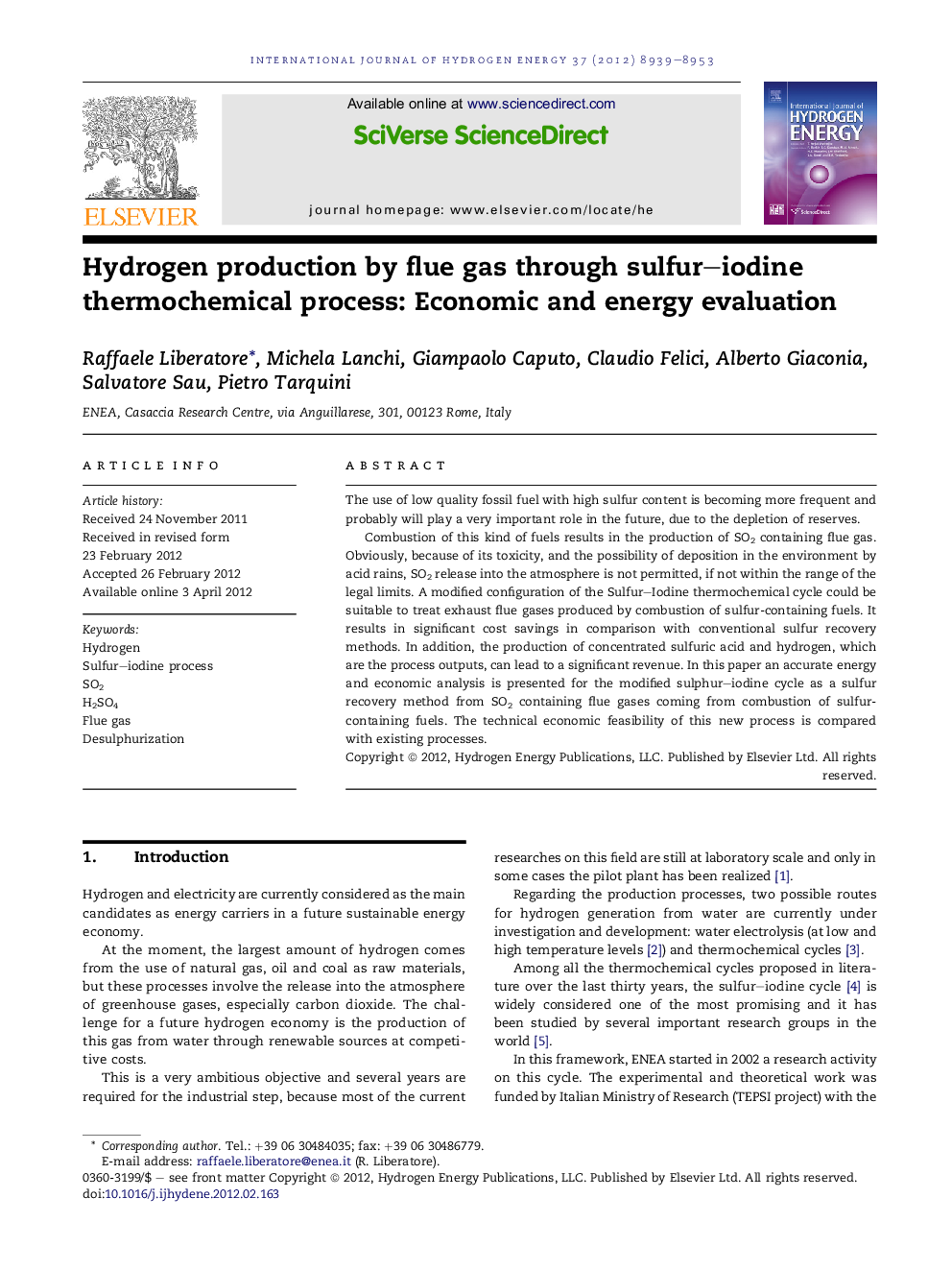| Article ID | Journal | Published Year | Pages | File Type |
|---|---|---|---|---|
| 1271393 | International Journal of Hydrogen Energy | 2012 | 15 Pages |
The use of low quality fossil fuel with high sulfur content is becoming more frequent and probably will play a very important role in the future, due to the depletion of reserves.Combustion of this kind of fuels results in the production of SO2 containing flue gas. Obviously, because of its toxicity, and the possibility of deposition in the environment by acid rains, SO2 release into the atmosphere is not permitted, if not within the range of the legal limits. A modified configuration of the Sulfur–Iodine thermochemical cycle could be suitable to treat exhaust flue gases produced by combustion of sulfur-containing fuels. It results in significant cost savings in comparison with conventional sulfur recovery methods. In addition, the production of concentrated sulfuric acid and hydrogen, which are the process outputs, can lead to a significant revenue. In this paper an accurate energy and economic analysis is presented for the modified sulphur–iodine cycle as a sulfur recovery method from SO2 containing flue gases coming from combustion of sulfur-containing fuels. The technical economic feasibility of this new process is compared with existing processes.
► Sulfur content in some fossil fuels produces SO2 in the flue gas. ► SI cycle in a modified form is able to produce H2 and H2SO4 acid by H2O and SO2. ► This paper provides an energy and economic analysis of this modified SI cycle. ► The proposed process is compared with one that is currently used.
